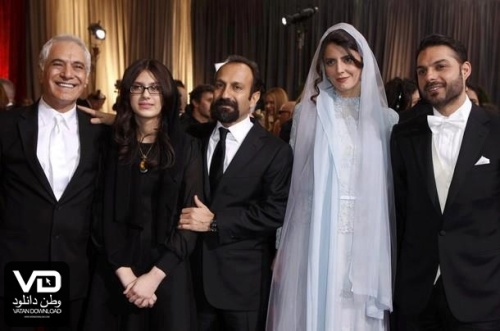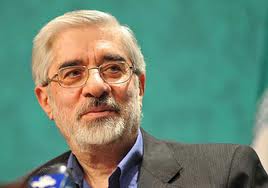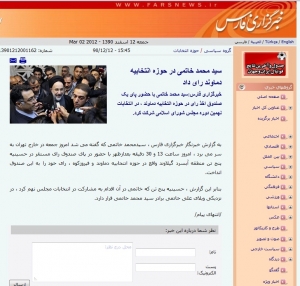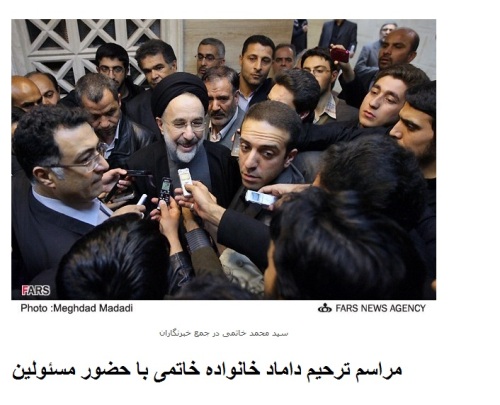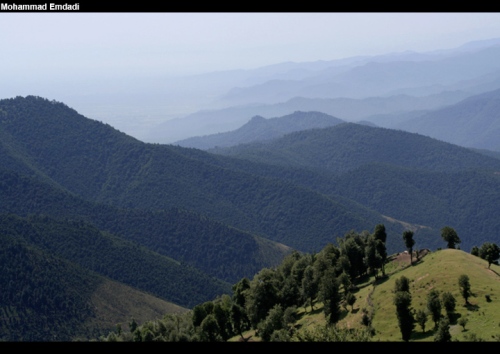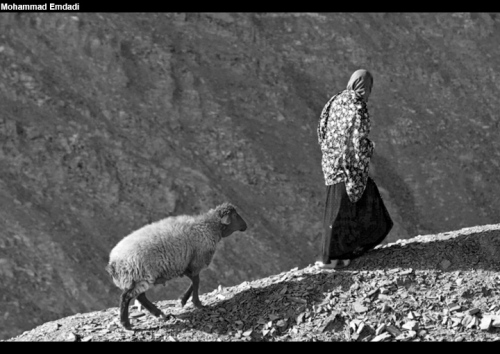Dear All,
Greetings! I hope you are keeping warm wherever you are. I have not opened a new window for a while. My daughter e-mailed me two days ago and said “Mom, aren’t you sending out a new window? There is a lot of nonsense in the media about Iran!” I am working on my next book, and I guess I was just trying to make all the political conflict go away so I can live the life most academics do: enjoying the classroom and carrying on research. All Iranians have that feeling from time to time. But my daughter has a point. There is just too much going on inside and outside Iran for these windows to stay closed. So, here it comes, update number fourteen!
Winter Celebration
Let us start with a fun cultural topic, something all Iranians of different age and ethnic background celebrate, Yalda, the heart of the winter, the longest night of the year. The actual Yalda night has passed. It is usually celebrated on December 21st. But it is still winter, and nights are cold and long. Take a look at the way Iranians celebrate that night to warm up the winter.
Celebrating the Anniversary of the 1979 Revolution
On Saturday February 11, the Islamic Republic celebrated the 33rd anniversary of the 1979 Revolution with a major rally that brought thousands of people to the streets. The government has been showcasing images from the rally to indicate popular support and therefore legitimacy. However, people working in government offices have smuggled out images of memos, such as the one I post below, sent to heads of units instructing them to bring their employes out for the rally and reminding them that attendance would be taken to ensure full participation.

Example of the memo sent by the Iranian officials to institutions demanding full participation by the employees in the February 11 rally threatening that attendance will be taken.
Peaceful March by the Opposition
The peaceful rally announced by the opposition for Tuesday, February 14, however, met with full militarization of the announced routes and arrests of over 400 people in Tehran and other cities, particularly in Shiraz. The main objective of the rally was to protest the house arrest of Zahra Rahnavard, Mir Hussein Mousavi, and Mahdi Karrubi whose objections to the result of the 2009 disputed general election led to the their captivity without trial. Their house arrest just entered its second year. You can join the Campaign for Human Rights in Iran demanding their freedom, here.

Mousavi, Rahnavard, and Karrubi are under house arrest and cut off from the world without a trial. Their fault is objecting to the results of the 2009 disputed election
Iranian Women Scholars and Activists Going Strong
As the Iranian Supreme Leader, Mr. Ali Khamenei spoke about marriage and motherhood as the first duty of every woman, Iranian women scholars and activists held a major conference about women in Muslim countries. The conference was organized by the Society of Iranian Women Historians. Read the full report here (in Persian).

The organizers expressed appreciation to Afsaneh Najmabadi, the Harvard scholar for participation in the conference and her over all contributions

The Poster for the Conference Organized by Iranian women historians
To remember how such simple but brave acts of exploration and self-expression can be in present day Iran, read about the two Iranian bloggers Vahid Asghari and Hosseing Derakhshan both likely to face the death squad because of running blogs which presented the Iranian government in a poor light and “enticed the population to rebel.” It is kind of ironic to kill people for demonstrating that life in Iran is better than they have suggested! Read more here.
Iranian Woman Engineer Invented Metal Foam
While on the topic of Iranian women, watch this short video about Afsaneh Rabiei, an Iranian woman engineer living and teaching in the United States who just invented something rare and apparently very useful: metal foam
Iran and Syria
Back to politics, the Iranian Regime has put itself in a dire situation by continuing to support the much hated regime of Assad now responsible for the death of over 6,000 Syrian citizens. The Syrian protesters, who have repeatedly sent messages of support to the Iranian people, view the Iranian government as one of the forces that has kept the regime of Assad from falling. In an unprecedented rally held on February 18 in the center of Damascus, close to Assad’s residence and the Iranian Embassy, the Syrians expressed anger at the people inside the embassy whom they referred to as armed thugs. See the full article in New York Times.

Massive demonstration in central Damascus against Assad and the Iranian Regime keeping him in power (reported in New York Times)
Extensive Sanctions on Iran and New Conflicts
Before I get any deeper into the details of the recent conflicts between western countries and Iran and look at a possible clash between Iran and Israel, let me say that although I find the Iranian foreign policy deeply flawed and in places totally unacceptable, I still disagree with our popular media here in the U.S. when it speaks of the “threat” of Iran in no uncertain terms. This view is overly simplistic and not backed by the facts that we actually know about the abilities and intentions of the Iranian government. Those who base their assertions on facts that are available to us often agree with me. I have collected a number of articles for you published by respectable activists, politicians, and investigative journalists here, here, and here. Furthermore, there are those scholars and journalists who believe that marginalization of Iran will indeed lead to more serious conflicts, here. More recently, there has been talk of the need to take military action to curb the threat Iran causes the world and particularly Israel.
There is every indication that unlike the past when the Iranian government took such threats with a pinch of salt, this time it is preparing itself for such an eventuality, here, and here. This is in part because the sanctions are beginning to show their effects in the daily lives of the Iranians. The situation has gotten particularly difficult since the sanctions were imposed on Iranian Central Bank. Indeed, the economic conditions may deteriorate so much that a war might seem like a way out (at least to certain factions within the Iranian government), here. The worst threat, however, lies in allowing the tension to escalate because, as Trita Parsi observes in this piece, without renewed diplomacy things can get out of control in the Persian Gulf even if neither side is trying to start a war. For Trita’s essay look here. Before I end this segment, however, let me give you another article on the horrors of the military option for all sides, here. I deeply believe we must avoid such a conflict – which I could see as developing into a far deadlier conflict than the one with Iraq.
Okay, let us just take a look at a beautiful recent image from Iran. Let us take a look at this peaceful night in the Naqsh Jahan Square in Isfahan to change the mood for a moment before we get to more politics.

This is what peace looks like on an ordinary evening in the main square in Isfahan!
Skirmishes with Israel, and the Iranian Schindler
Iran and Israel have been savaging each other verbally at least for the past two decades though the media here mostly highlight the Iranian side, particularly when it can be read as anti-Semitic. A recent example is the assertion by the Iranian Supreme Leader who compared the problems caused by Israel in the region to a “cancer.” I must admit, I find the metaphor very harsh and totally unacceptable to be applied to any country even though the Iranian officials claim that it applies to the government of Israel and its aggressive and destructive impact on Palestinian lives and not to the Jews. If you are an Iranian, and hearing about the above remark makes you feel bad, read this article which was sent to me by a loving Jewish friend. It is called the Iranian Schindler, and it makes you remember the kinds of Iranians whom we forget because of the current conflicts, here. Or, take a look at this picture which is just over two years old. It was taken when President Ahmadinejad visited Tehran Polytechnic:

The sign reads: Fascist President, Polytechnic is not for you!
What is remarkable in the recent events is the pressure on the Iranian Supreme Leader due to severe sanctions, Israeli threats to attack Iran (and don’t forget Israel currently has nuclear weapons), the assassination of four Iranian scientists in the past two years (widely seen as the work of Israeli intelligence), and internal conflicts. Unless you visit sites such as the Counterpunch, edited by Alexander Cockburn and Jeffrey St. Clair, however, you are unlikely to see an argument for the way the Iranian leader would view the role that Israel has been playing in these assassinations. If you like to see one such argument, take a look at the piece by Ismael Hossein Zadeh, the Iranian economist at Drake University, here. In short, Mr. Khamenei’s angry remarks, and his choice of a more aggressive tone, are a reflection of this point of view.
Another sign of this change of tone, in the Supreme Leader’s talk mentioned above, was his clear reference to having supported Hizbullah in pushing the Israeli army out of Southern Lebanon after its July 2006 invasion. The Iranian government had never acknowledged that fact before.
Such tensions between Iran and Israel are not totally new. Still, the temperature rose dramatically when Mr. Panetta, the American Secretary of Defense, was described in a Washington Post column on February 2nd as being worried about the growing possibility that Israel will attack Iran over the next few months. According to the column, Panetta believes there is a strong likelihood that Israel will strike Iran in April, May or June, before Iran enters what Israelis describe as a zone of immunity to commence building a nuclear bomb. Ever since, Mr. Panetta has been trying to avoid making further comments on the subject, here. But the initial observation drew a range of angry responses from Iranian officials.
Furthermore, amidst the Israeli expressions of fear of an existential threat from Iran, the Iranian government has since announced further progress in developing home made techniques for uranium enrichment (though it maintains that none of it is for building a bomb). In other words, threats and assassinations don’t seem to do much except putting the two countries on a collision course. One can only hope that sanity will prevail.
Never Mind their Nuclear Program!
A lovely, ex-student of mine has sent this lighthearted article about a group of Iranian women training in martial arts in a state-sponsored all-women Ninja club 28 miles northwest of Tehran. It’s called “Iran has an army of deadly Ninja Women.” It just shows a side of Iran you don’t usually get to see. I post one picture below but you can read the full article here.

A Member of the Iranian Ninja women
Wedding On the Sabalaan Peak
Let us close this window with a happy picture, one that is about love and union rather than war and conflict. Muslim Najafi and Maryam Fekri two young Iranian climbers celebrated their wedding on the peak of Mount Sabalaan in north eastern Iran. It is good to know that political conflict and economic hardship does not stop normal life for young people.

Muslim Najafi and Maryam Fekri got married on Mount Sabalaan!
Have a great week!
Fatemeh

























